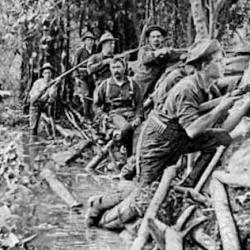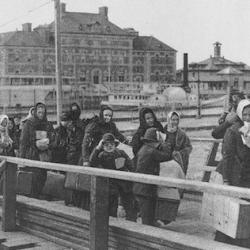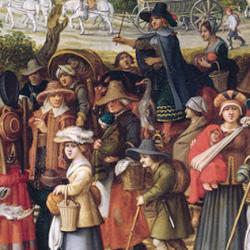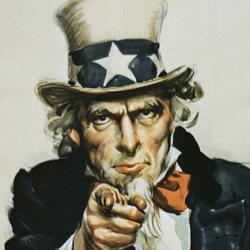During the gold rush of 1848, Chinese immigrants began to move into the United States in large numbers, especially in California. Between 1850 and 1882, a quarter-million immigrated, many of them working on railroads and mines, in dangerous working conditions, with little pay and few tools.
During the 1860s and 1870s, various forces converged against the Chinese workers. Labor leaders objected when Chinese were brought in to break strikes, and as unemployment rose the Chinese were seized on as a scapegoat. National politicians exploited the dissatisfaction in an effort to secure the support of California voters. Racist slurs against the Chinese provided a constant backdrop.
As Daniel Tichenor observes in his Dividing Lines, a history of US immigration politics, “By the late 1870s, a formidable Left-Right coalition had clearly emerged in favor of Chinese exclusion. . . . Within the labor movement, classic exclusionists like Kearney railed against the racial dangers of Chinese immigration while egalitarian nationalists . . . worried about how Asian labor affected the economic opportunities of native-born workers. Labor organizations across the country presented Congress with numerous petitions protesting ‘the systematic importation and immigration of Chinese laborers into the United States, to be employed at rates of wages ruinous to the free labor of our citizens.’ The strong grass-roots movement of anti-Chinese clubs and organizations also established a firm presence in Western states, drawing an array of Sinophobic social elites and working-class activists into their ranks. The movement’s electoral clout ultimately led Western politicians to become active members of anti-coolie clubs and Asian exclusion leagues” (91-2).
In 1882, Congress passed the Chinese Exclusion Act that prohibition Chinese immigration for 10 years. The term of the act was extended several times, and not finally overturned until 1943. The law was challenged several times, and in response the Supreme Court articulated the “plenary power doctrine that gave the Federal government could regulation immigration and enforce immigration laws without judicial scrutiny. Stephen Johnson Field declares in an opinion that . “[If Congress] considers the presence of foreigners of a different race in this country, who will not assimilate with us, to be dangerous to its peace and security . . . its determination is conclusive upon the judiciary” (109-10).
The results were far-reaching. According to Tichenor, one effect was to dismantle the constitutional rights won by African Americans after the Civil War. There is a clear line from the Chinese Exclusion Act to Jim Crow laws. The act also greatly expanded the regulatory power of the Federal government:
“the exclusion of Chinese newcomers in the same era required an ambitious new sphere of national regulatory control to be created. . . . reform-minded state legislatures, intense electoral competition between both major parties, and new forms of judicial activism propelled unprecedented restrictions on Chinese immigrant admissions What is perhaps most striking, however, is not the power of American political institutions to routinely derail ‘purposeful’ national government in this period, but their capacity to adapt in service to traditions of racial hierarchy In particular, Chinese exclusion initiated and legitimated state capacities for restricting immigration on ethnic and racial bases that challenged the nineteenth-century trajectory of U.S. policy toward European inflows. Chinese exclusion proved several decades later to be anything but an isolated development, as national policymakers constructed an increasingly elaborate immigration control system of racist design” (113).















